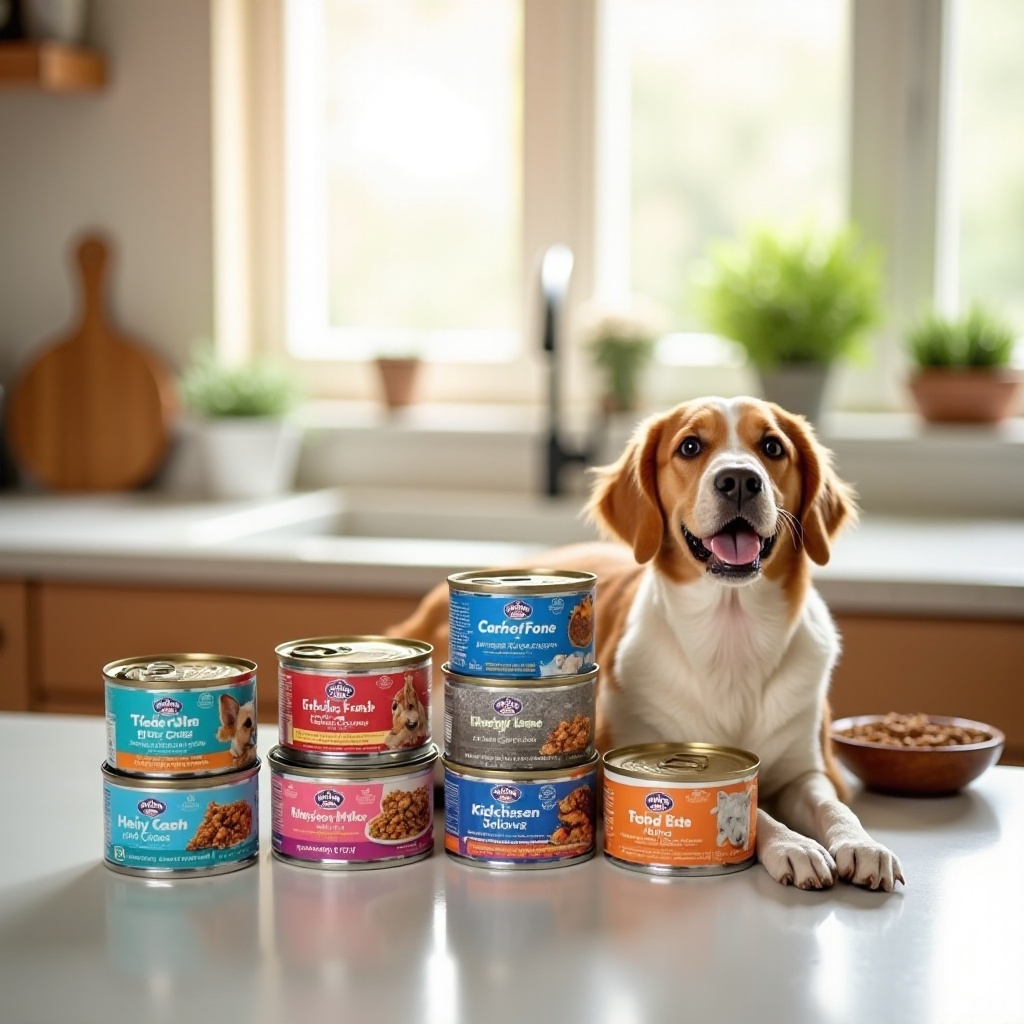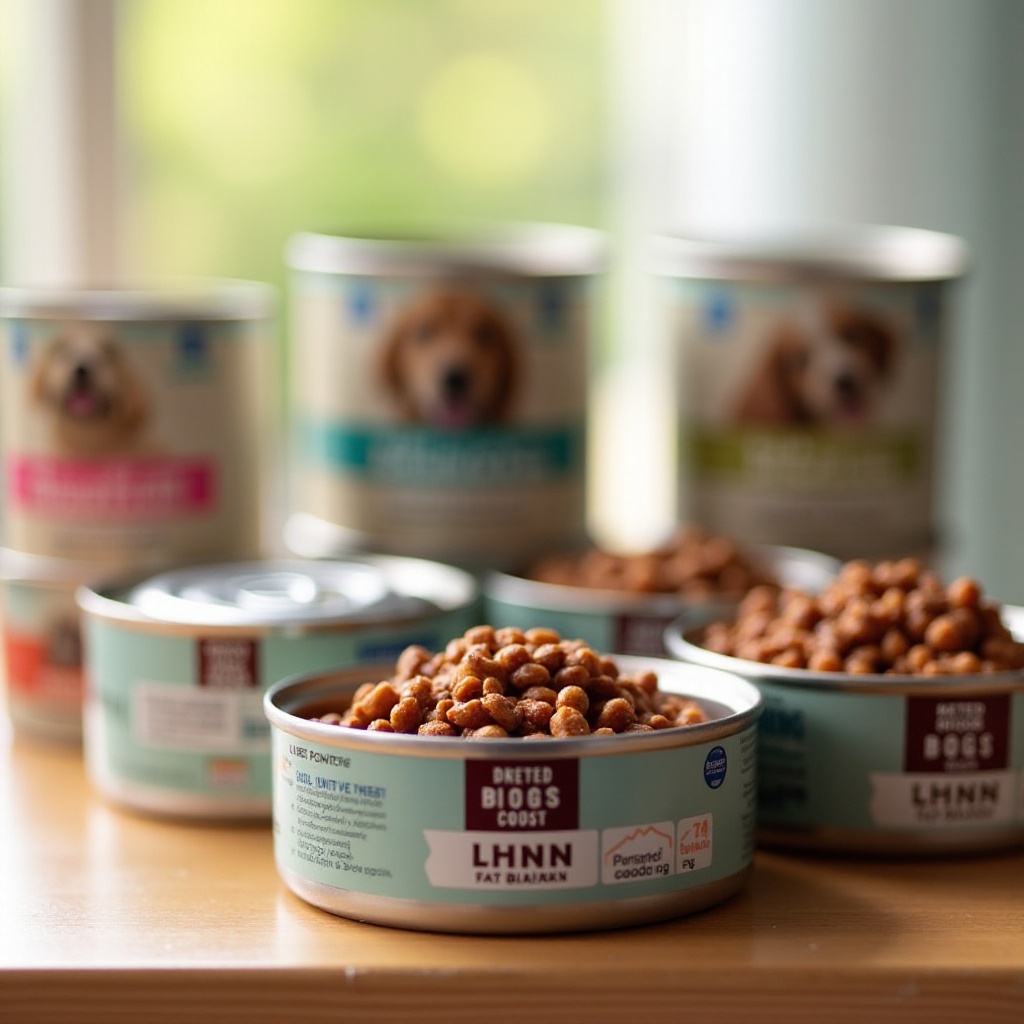Introduction
Managing diabetes in dogs can be challenging, but the right diet plays a crucial role. Canned dog food tailored for diabetic dogs can significantly help in managing their condition effectively. This article will discuss the top 5 best canned dog foods for diabetic dogs, keeping their unique nutritional needs in mind.
Understanding the Importance of Diet for Diabetic Dogs
A proper diet is paramount for diabetic dogs. It helps regulate blood sugar levels, maintain a healthy weight, and ensure they receive essential nutrients. This guide will help you select the best canned food tailored to the needs of diabetic dogs.

Understanding Canine Diabetes
What is Canine Diabetes?
Canine diabetes is a chronic condition in which a dog’s body cannot produce enough insulin or effectively use the insulin produced. This leads to elevated blood glucose levels, which can cause various health complications if not properly managed.
Symptoms and Diagnosis
Common symptoms of diabetes in dogs include excessive thirst, frequent urination, weight loss despite increased appetite, and lethargy. If you notice these signs, consult your vet for a proper diagnosis through blood and urine tests.
Role of Diet in Diabetes Management
Diet is essential in managing diabetes. Balanced nutrition helps stabilize blood sugar levels, reducing the risk of spikes and dips. A diet rich in fiber, low glycemic index carbs, and high-quality proteins can make a significant difference in your dog’s health.

Key Nutritional Needs for Diabetic Dogs
Low Glycemic Index Ingredients
Foods with a low glycemic index release glucose slowly into the bloodstream, helping to manage blood sugar levels effectively. Ingredients like barley, peas, and sweet potatoes are often used.
Importance of Fiber
Fiber aids in slowing glucose absorption, promoting better blood sugar control. It also helps maintain digestive health. Look for canned dog food high in soluble and insoluble fibers.
Healthy Protein Sources
High-quality proteins are crucial to maintaining muscle mass and overall health. Lean meats, fish, and plant-based proteins from sources like peas or chickpeas are ideal for diabetic dogs.
Avoiding Certain Fats and Sugars
Avoid foods high in simple sugars and certain fats that can cause rapid blood sugar spikes. Stick to foods with healthy fats like omega-3 and omega-6 fatty acids, which support overall health.
Top 5 Best Canned Dog Foods for Diabetic Dogs
Product 1: Hill’s Prescription Diet w/d Digestive/Weight/Glucose Management
- Features:
- Rich in fiber to manage blood glucose effectively.
- Includes low glycemic index ingredients.
- Formulated with lean proteins.
- Benefits:
- Eases digestion.
- Maintains a healthy weight.
- Promotes steady blood glucose levels.
Product 2: Royal Canin Glycobalance Canned Dog Food
- Features:
- Controlled nutrient formula ideal for weight management.
- High in fibers and low in carbohydrates.
- Benefits:
- Reduces post-meal glucose spikes.
- Supports digestive and overall health.
Product 3: Purina Pro Plan Veterinary Diets DM Dietetic Management Formula
- Features:
- Formulated for dogs with diabetes.
- High protein and low carbohydrate content.
- Benefits:
- Supports lean muscle mass.
- Manages blood sugar levels effectively.
Product 4: Wellness CORE Grain-Free Canned Dog Food
- Features:
- Grain-free with low glycemic index vegetables.
- Includes premium proteins like turkey and chicken.
- Benefits:
- Maintains muscle mass.
- Provides sustained energy levels.
Product 5: Blue Buffalo Wilderness High Protein Grain-Free, Natural Wet Dog Food
- Features:
- Free from grains and contains healthy carbohydrates.
- Rich in proteins and fibers.
- Benefits:
- Reduces the risk of glucose spikes.
- Supports overall health and digestion.

How to Transition Your Dog to a New Diet
Once you have selected the best canned dog food for your diabetic dog, transitioning them to the new diet is key.
Steps for a Successful Transition
- Gradual Introduction: Start by mixing the new food with your dog’s current one. Gradually increase the proportion of the new food over 7-10 days to ensure a smooth transition without upsetting their digestive system.
Monitoring Your Dog’s Response
- Observation: Keep a close eye on your dog’s energy levels, digestive health, and overall behavior during the transition period. Look for any adverse reactions and consult your vet if necessary.
Adjustments and Troubleshooting
- Adjustments: If your dog shows signs of discomfort or digestive issues, adjust the food ratio accordingly. Seek veterinary advice for long-term dietary adjustments to better suit your dog’s specific needs.
Additional Tips for Managing Diabetic Dogs
In addition to a proper diet, there are other important aspects of managing a diabetic dog’s health.
Portion Control
Ensure you measure your dog’s food accurately to manage calorie intake and avoid weight gain, which can complicate diabetes management.
Timing of Meals
Feed your dog at regular intervals to help maintain stable blood sugar levels throughout the day.
Regular Check-Ups
Regular veterinary check-ups are essential for monitoring your dog’s health, ensuring their diet is effective, and making any necessary adjustments.
Conclusion
Managing a diabetic dog’s diet is crucial for their health and well-being. By choosing the best canned dog food tailored to their needs, you can help regulate their blood sugar levels and maintain their overall health. This proactive approach will ensure your diabetic dog leads a happy and active life.
Frequently Asked Questions
How do I identify the best canned dog food for my diabetic dog?
Look for food with low glycemic index ingredients, high fiber, lean proteins, and no simple sugars.
How often should I feed my diabetic dog?
Feed your diabetic dog at regular intervals, typically twice a day, to maintain stable blood sugar levels.
Can I give treats to my diabetic dog?
Yes, but choose diabetic-friendly treats low in sugar and high in fiber, and consult your vet for recommendations.
